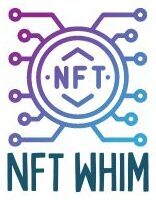Hi there! As the world of NFTs continues to evolve, new concepts and technologies are emerging that are changing the way we create, buy, and sell these digital assets. One of these innovations is lazy minting… In this article, we will explore what lazy minting is and how it works, as well as its advantages and disadvantages.
Lazy minting is a new and innovative approach to NFT minting that offers several advantages over traditional minting. It allows creators to test multiple versions of an NFT, reduces costs and improves efficiency. In essence, with lazy minting you only pay the mining cost if someone buys your NFT. However, it also has some disadvantages such as delayed minting, risk of losing metadata
What is Lazy Minting?
Minting is the process of creating an NFT, which involves adding a set of metadata to a digital asset and uploading the image to a blockchain. This process ensures that the asset is unique, verifiable, and cannot be duplicated or replicated.
Lazy minting is a new approach to minting NFTs that is different from the traditional method of minting. In traditional minting, an NFT is minted at the time of creation, which means that all the metadata is added to the blockchain at once. With lazy minting, the metadata is added to the blockchain only when the NFT is sold or transferred, making the minting process more flexible and efficient.

Can You Mint an NFT “for free” using Lazy Minting?
Yes, you can technically “mint” an NFT for free using lazy minting. This is because as a creator, you only pay for the minting when an NFT is actually sold or transferred when “lazy minting” is utilized. In this way, you can therefore list various NFTs thought lazy minting, and be sure to not loose money if none ends up buying them (as long as your sale price is higher than the cost of mining the NFT).
How Does Lazy Minting Work?
Lazy minting works by creating an NFT without uploading its metadata to the blockchain. This means that the NFT is created without a token ID, and its metadata is stored off-chain in a database or another location.
When the NFT is sold or transferred, its metadata is uploaded to the blockchain, and a token ID is generated. This process is called minting on demand, and it allows for more efficient use of blockchain resources, as only NFTs that are sold or transferred require minting.

Advantages of Lazy Minting
Lazy minting offers several advantages over traditional minting, including:
Flexibility
Lazy minting allows creators to create NFTs without committing to the blockchain. This means that they can create multiple versions of an NFT, test them, and only mint the most popular ones.
Lower Costs
Lazy minting reduces the costs of minting an NFT since creators only pay for the minting when an NFT is sold or transferred. This means that creators can avoid paying the gas fees associated with minting NFTs that may not sell.
Improved Efficiency
Lazy minting reduces the load on the blockchain by only minting NFTs that are sold or transferred. This ensures that the blockchain is not overloaded with NFTs that are not actively being used, which can slow down the system.

Disadvantages of Lazy Minting
While lazy minting offers several advantages, it also has some disadvantages, including:
Delayed Minting
Lazy minting can result in a delay between the sale or transfer of an NFT and its minting. This means that the buyer may have to wait for the NFT to be minted before they can transfer or sell it, which can be a disadvantage in a fast-paced market.
Risk of Losing Metadata
Since the metadata of a lazy-minted NFT is not immediately uploaded to the blockchain, there is a risk that it may be lost if the creator or the platform that hosts it goes out of business. This can result in the loss of the NFT’s value, as the metadata is essential for verifying its authenticity.
Less Secure
Lazy minting is considered less secure than traditional minting because the metadata of the NFT is not immediately uploaded to the blockchain. This means that the NFT can be vulnerable to hacking or theft during the period between creation and minting.

How do you perform Lazy Minting: step-by-step process
let me walk you through an example of a lazy minting process.
Let’s say you are an artist who wants to create an NFT of a digital painting you made. Instead of going through the traditional minting process, you decide to use the lazy minting method.
First, you create a digital wallet on a blockchain platform that supports NFTs. This wallet will be used to store your NFT.
Next, you upload your digital painting to a decentralized storage network like IPFS. This ensures that your file is securely stored and can be accessed by anyone on the blockchain network.
After that, you create a smart contract on the blockchain platform, which will act as the foundation for your NFT. The smart contract includes details such as the name of the NFT, its description, and other relevant information.
Once the smart contract is created, you add a lazy minting function to it. This function ensures that the NFT is only created when a buyer purchases it. This means that the NFT does not exist until it is sold, and it is minted on the fly.
When a buyer is interested in purchasing your NFT, they send a request to buy it. The smart contract automatically generates the NFT, and it is sent to the buyer’s digital wallet. The buyer now owns a one-of-a-kind, original piece of digital art, which they can store, trade, or sell on the blockchain network.
As you can see, lazy minting is a straightforward and efficient process that eliminates many of the upfront costs and barriers to entry associated with traditional minting methods. With lazy minting, artists can create and sell NFTs without worrying about high gas fees or the cost of minting large quantities of NFTs upfront. It also provides a unique opportunity for artists to test the market and gauge interest in their work before committing to a large-scale minting operation.

Conclusion
In conclusion, lazy minting is a unique and cutting-edge approach to NFT minting that offers numerous benefits over traditional minting. Not only does it provide creators with a flexible and cost-effective way to test multiple versions of an NFT, but it also enhances efficiency by enabling creators to launch their NFTs faster. By delaying the minting process, creators can avoid the high costs of minting all the versions of the NFT, and only mint the specific version of the NFT that is in demand. This can save creators a significant amount of time and money.
However, it is important to note that there are some downsides to lazy minting as well. Delaying the minting process can lead to a longer wait time for buyers, which may cause them to lose interest in the NFT. Additionally, the risk of losing metadata associated with the NFT can lead to a loss of value for the NFT. As a result, creators must be mindful of these potential drawbacks and take steps to mitigate them as much as possible.
Overall, lazy minting has revolutionized the way NFTs are created and sold. As the NFT market continues to evolve and expand, it is likely that lazy minting will become an increasingly popular choice for creators looking to create unique and valuable NFTs. By utilizing this innovative approach to NFT minting, creators can unlock new opportunities and reach a wider audience while reducing costs and enhancing efficiency.
Robin
Author: Robin Olsson
Author Bio: I’m Robin and on this website, I share everything I’ve learned since getting into NFTs in 2021. I have a background in research and I’ve been in crypto for several years. You can read more about me here.







